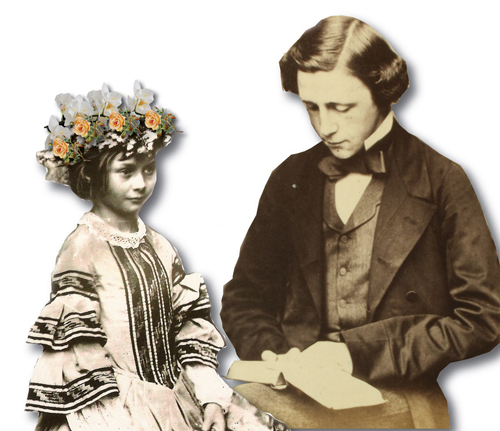
Johnny Depp and Mia Wasikowska are scheduled to reprise their roles as the Mad Hatter and Alice, respectivement, in Disney’s Alice au pays des merveilles 2 on May 27th, 2016. Malheureusement, the sequel to the original blockbuster (the sixth movie to earn more than $1 milliards dans le monde entier) will, in the words of the White Rabbit, être “en retard”. It will be late to join in the global, événements nationaux et locaux étant orchestrées par le Lewis Carroll Society of North America (LCSNA) à l'automne 2015 to celebrate the 150th anniversary of the publication of Carroll’s beloved Alice au pays des merveilles.
The new opera fantasy in two acts, Alice – Adventures in Wonderland, by Gary Bachlund (composer, co-librettist) and Marilyn Barnett (co-librettist), hopefully won’t be “en retard”. Bachlund is known and respected on the stages of the most prestigious opera houses in the world. Since his Carnegie Hall debut as a singer in 1986, il est apparu au Metropolitan Opera, l'Opéra de Los Angeles, Washington Opera, Opera de Paris/Bastille, Théâtre Royal (Madrid), Opéra de Francfort, Welsh National Opera, Écossaise National Opera et l'Opéra de Montréal, pour n'en nommer que quelques uns. He is also a prolific composer and has written over 1,200 chansons d'art et lieder sur des textes en plusieurs langues, ainsi que d'autres œuvres chorales et de chambre.
Alice est son premier grand opéra. Assis quelque part entre l'opéra, operetta, et le théâtre musical, les éléments mélodiques et lyriques sont soulignés, with memorable and singer-friendly arias, ensembles, and orchestration. “The work is of a melodic sweetness that Reverend Dodgson or for that matter, the young Alice would have thoroughly enjoyed,” comments Mark Burstein, President of the Lewis Carroll Society of North America. The piece, which includes both Alice au pays des merveilles et Through the Looking-Glass, is written to be performed together or separately staged with costumes and sets, semi-staged with projection, or performed in concert.
I had the good fortune to get a sneak peak of the new opera, Alice (http://www.youtube.com/watch?v=IEpx8ntjGUA&feature=youtu.be) et discuter avec son compositeur de talent, Dr. Gary Bachlund.
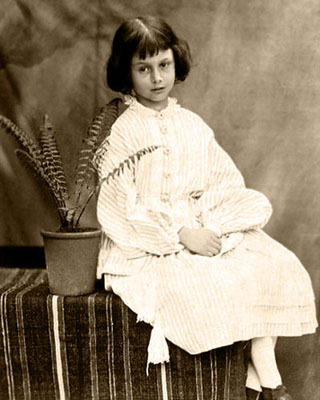
Gary, me dire comment vous êtes devenu un compositeur?
Avant de voyager autour du monde en tant que chanteur, Je ai touché à la composition quelques choses. Avec mes voyages, Je ai fait des souvenirs pour moi, ramasser un intérêt pour un poète ou un poème et les traduire en chanson, ou parfois composer une oeuvre instrumentale. En parallèle avec une carrière en tant que chanteur, I returned to UCLA and took graduate and post-graduate course in composition and theory, earning a PhD, rather unusual for an opera singer, much less a tenor! At the end of my career as singer, I’d amassed a portfolio of work and thought to share it freely with others. This ranges now from over a thousand art songs in a number of languages, organ and piano works, chamber music and more. Retired now, I find this time in life most luxurious in terms of having time to invent and then invent some more.
What or who were your earliest influences?
My earliest positive influences were teachers Dorothy Fries and Florence Jolley, composer and orchestrator Eugene Zador, as well as the many composers whose works I’d sung since a child. Some early negative influences steered me away from the modern avant garde of which there is enough and more than enough. The earliest influences as regards music come from choral work as well as organ works I heard when young.
Tell me about your Alice opéra – what inspired you to write the opera? Et pourquoi Alice?
I have repeatedly re-read a number of so-called children’s books as an adult. There is much in the fancy-filled literature for adults, and Carroll’s work is atop that list. Dodgson himself wrote that he imagined his work as musical theater — an “operetta”. A number of versions take some portion of the text, or truncate too much or, à mon avis, lose focus on the whole. Dodgson saw a complete “operetta.” I hope we have complied, for in fact most of the libretto is Carroll, plain and simple. It is of course edited for time, but with the utmost respect for his art.
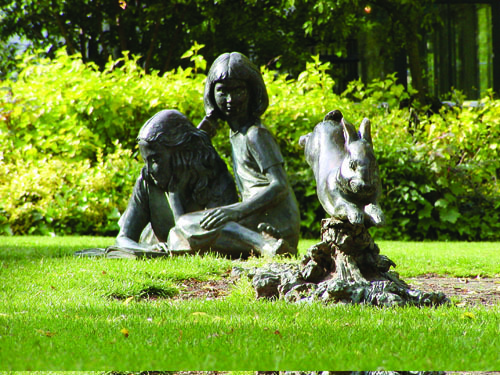
How would you describe the musical influences in Alice? What kind of audience do you think will appreciate it most and why?
The British tradition from Purcell forward into today was familiar to me, and the notion to employ as many styles and forms from this musical history appealed. Additionally there is in our Alice much melody and good humor, in both the Wonderland and Looking-Glass portions of the work. En tant que chanteur long de ma vie, Je écris pour voix, being in love with the magical things they can do and portray. The parts are gracious for singers with that in mind. I think audiences will appreciate the tunefulness of the score.
How difficult is it for conservatories or opera houses to produce this opera? What’s involved from sheet to stage?
We are in an age of economic austerity, as in Europe many theaters’ subsidies from government are under pressure while in the States, the costs of producing new works can be daunting. En outre, courtesy of the trend towards the avant garde and experimentation in music theater, many works have been unsuccessfully produced, not found a consistent audience and such productions, scrapped after a premiere run, have sapped financial underwriting for more and newer. It was our thought to make a work that would not be too expensive in terms of staging. What is involved from the notes to a performance is much, from casts and orchestra costs to set design and construction, and details of which many are unaware. I hoped to compose a work popular enough for repeat performances and audiences wishing to return again to it over time. This is of course the case with the central repertoire of the opera world today. This is why I have revised it for a small chamber orchestra: 2 oboes, 2 horns, a single percussionist, harp, piano and strings, with some exposed writing for the solo violin. One might perform the work with such a small ensemble or use multiples for the strings in a more lavish production setting. I also could imagine costumed singers with backdrops being nothing more than projections from perhaps the Tenniel illustrations, or others as one might choose. The text and characters remain the central focus, de mon point de vue.
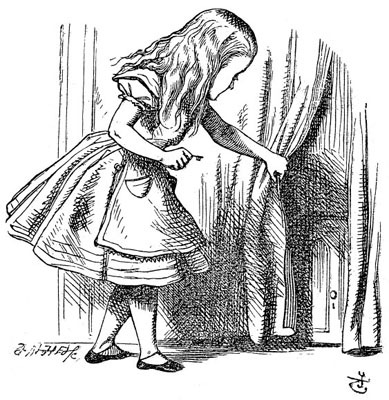
What are some of your favorite arias in the work?
I dare not say. The work is filled with melody and good fun. A skirt role for the Queen of Hearts, sung by a baritone or bass baritone. Tweedledee and Tweedledum as dueling tenors with a duet for them, verses rising by half step across the span of an octave. Alice’s Jabberwocky, its gestures and textures in part recalling the accompaniment to silent movies, as one of my friends of many years was among the last of that breed of artist. Some of Carroll’s text, for Carroll plays his own part in the opera, are taken from his letters, and of course as much of the poetry as possible had to be set to music, didn’t it?
Gary, why are creators still fascinated with Carroll’s Alice story almost 150 ans après sa première publication?
Il ya quelque chose à l'intérieur pour les adultes que pour les enfants, avec de fantastiques, personnages fantaisistes, rime et parodies intelligente, commentaire couches sur la vie et la société, tous liés avec un grand enthousiasme d'un enfant pour la vie. Cela explique les nombreux illustrateurs seule qui nous ont montré ce que Carroll mis en mots. Cela explique la bourse que creuser dans ses mystères créatives est un sujet encore sans fin pour l'enquête et la spéculation, and societies dedicated to advancing the work into future generations. Illustrations moved from static pictures to motion pictures and animation, even to parodies, spoofs and rip-offs. There is no single answer, for there are many answers and the answer remains “why is a raven like a writing desk?”
Pour plus d'informations sur Alice – Le New Opera: http://www.bachlund.org/Alice.htm
Pour plus Alice articles
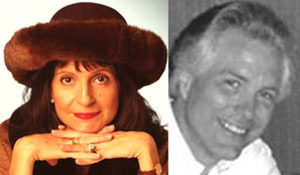
All Photos are courtesy of The Real Alice in Wonderland book and Gary Bachlund
C. M. Rubin est l'auteur de deux séries en ligne largement lecture pour lequel elle a reçu une 2011 Upton Sinclair prix, “La recherche globale pour l'éducation” et “Comment allons-nous savoir?” Elle est également l'auteur de trois livres à succès, Y compris The Real Alice au pays des merveilles.
Suivez C. M. Rubin sur Twitter: www.twitter.com/@cmrubinworld

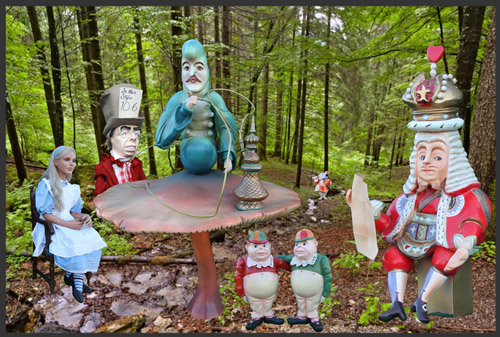
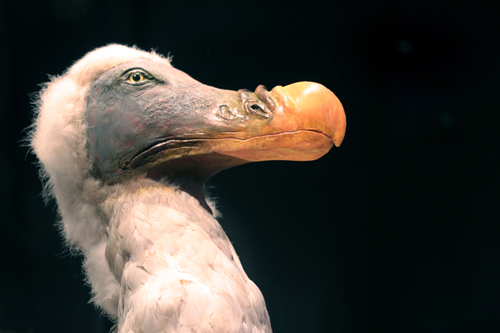
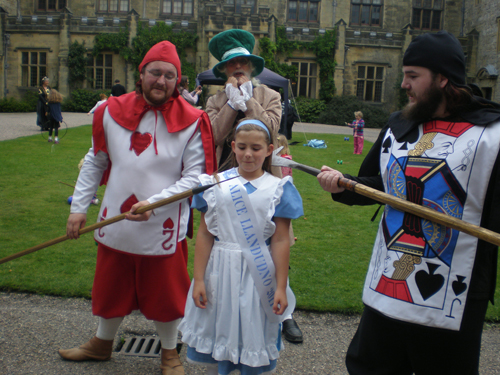
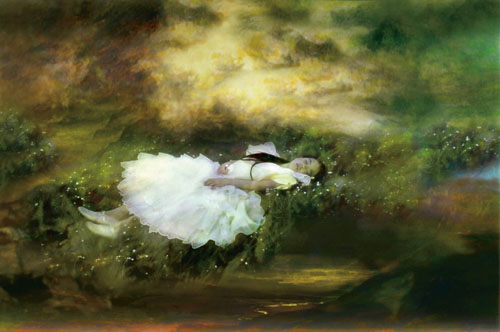
Commentaires récents